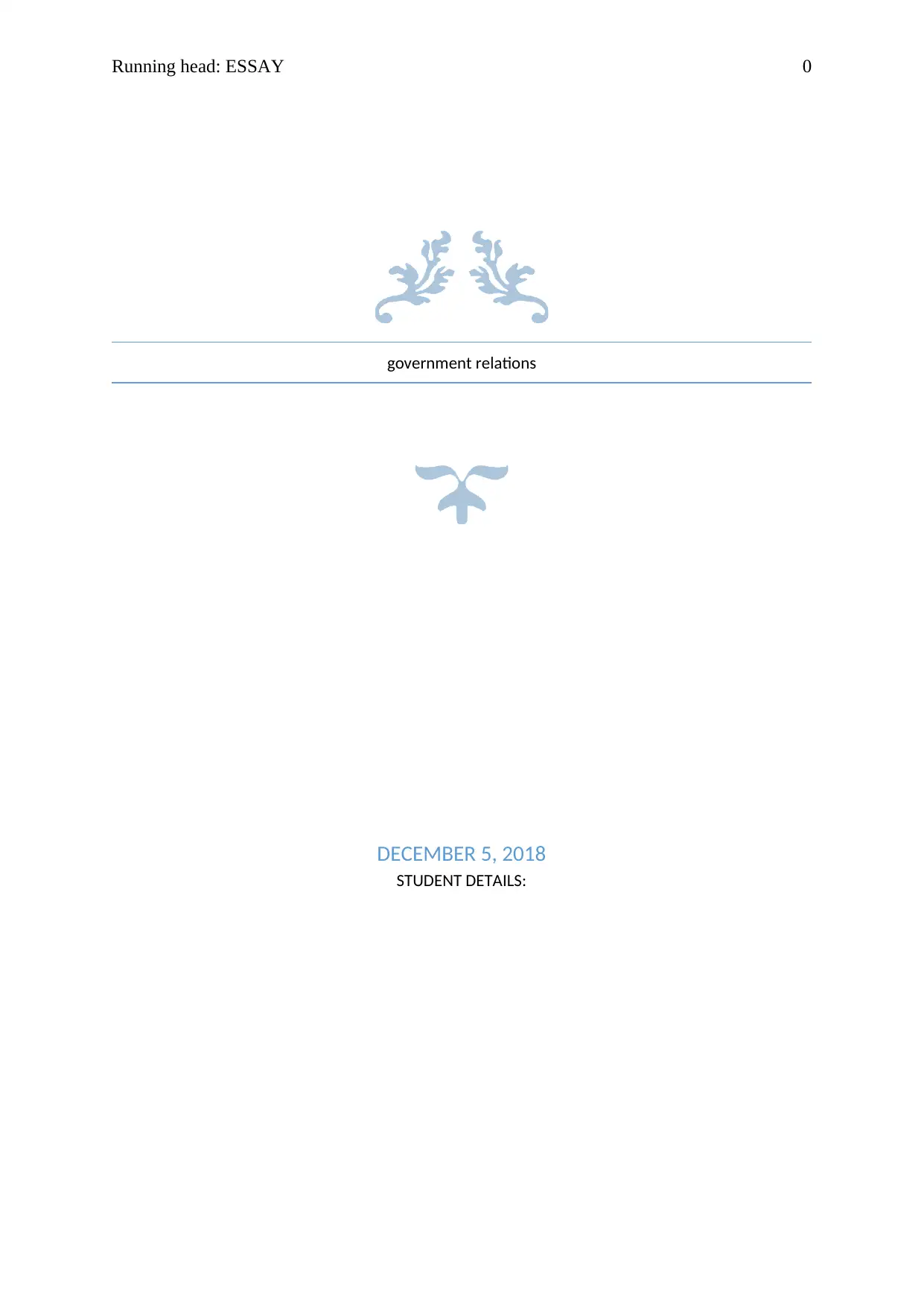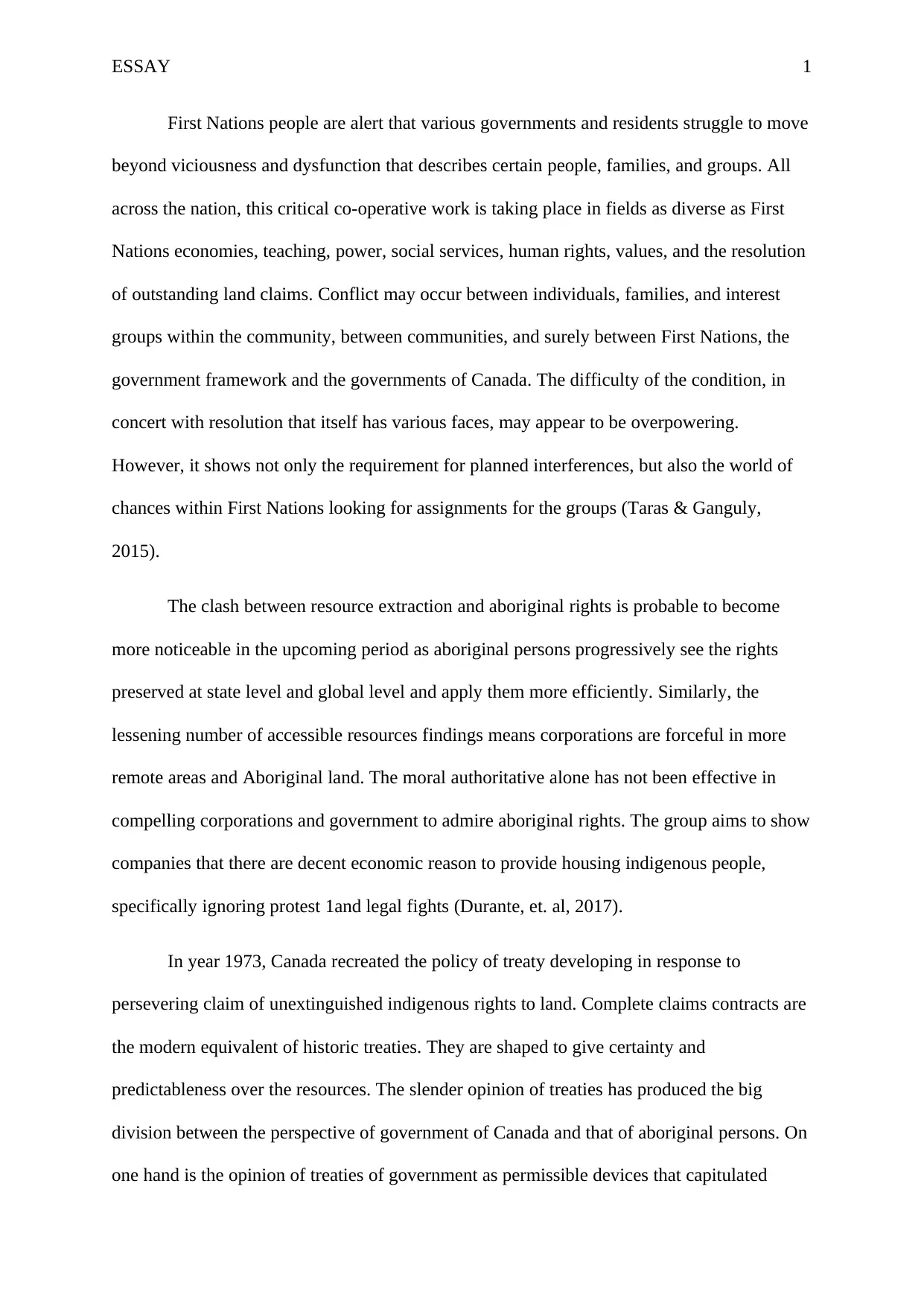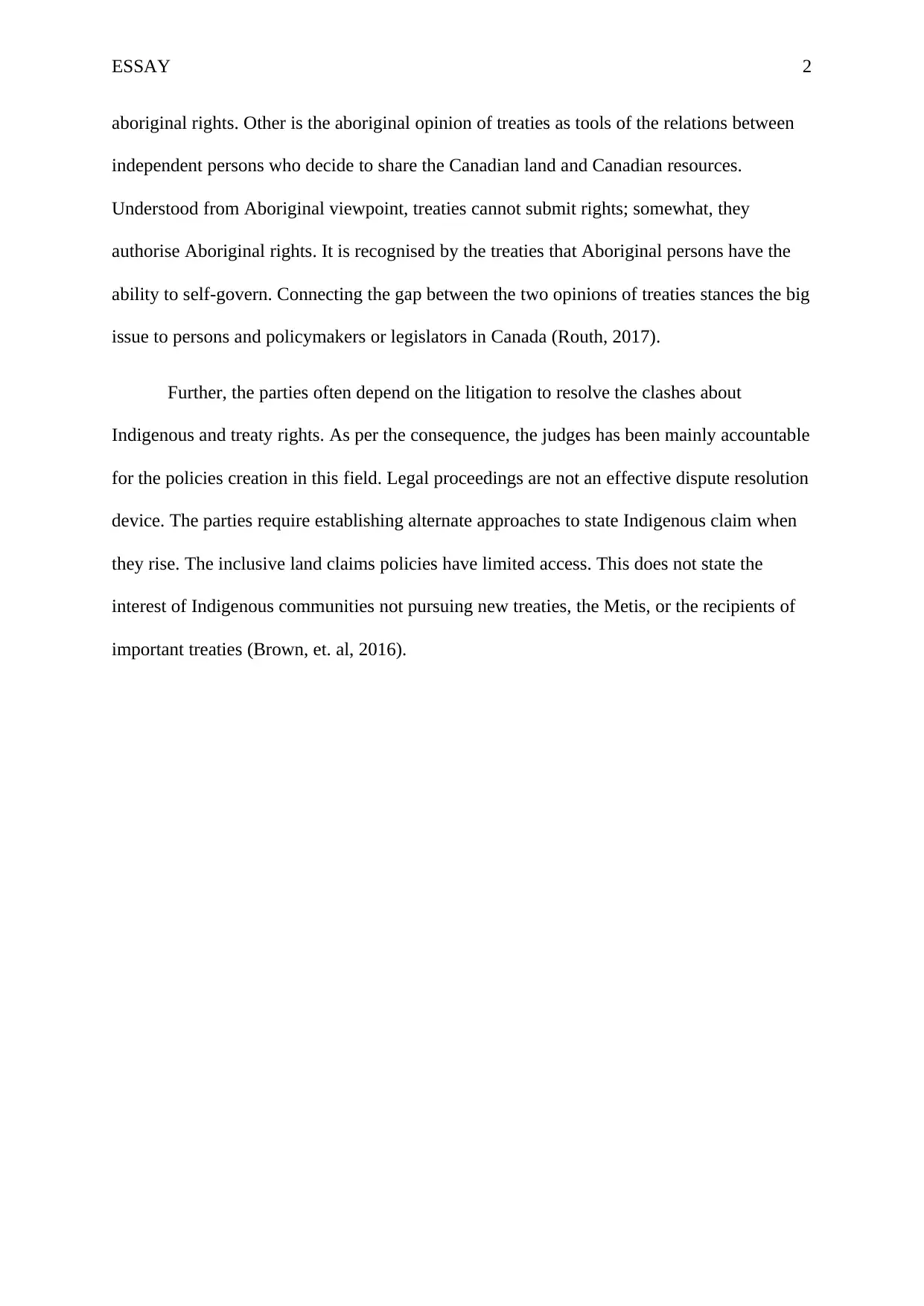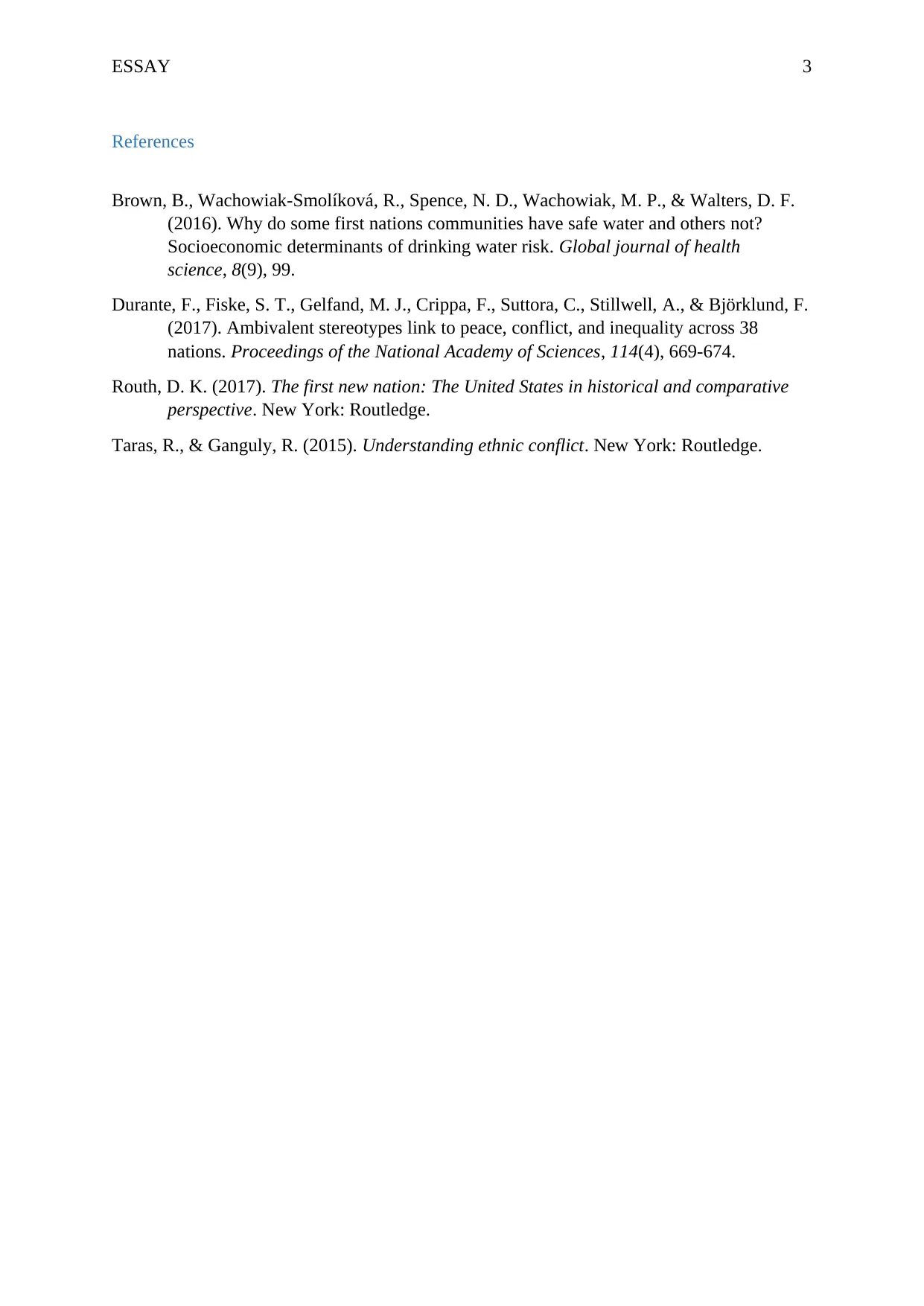Analyzing Government Relations with First Nations in Canada
VerifiedAdded on 2023/05/28
|4
|738
|182
Essay
AI Summary
This essay explores the complex relationship between the Canadian government and First Nations people, highlighting the historical context of treaty development and the ongoing challenges related to land claims and resource extraction. It examines the differing perspectives on treaties, with the government viewing them as legal devices surrendering Aboriginal rights, while First Nations perceive them as tools authorizing their rights to self-governance. The essay also addresses the role of litigation in resolving disputes and emphasizes the need for alternative approaches to state Indigenous claims. It further discusses the limitations of inclusive land claims policies and the importance of economic reasons in providing housing for indigenous people. The essay concludes by underscoring the necessity for bridging the gap between the two perspectives on treaties to foster better relations and policies in Canada.
1 out of 4











![[object Object]](/_next/static/media/star-bottom.7253800d.svg)